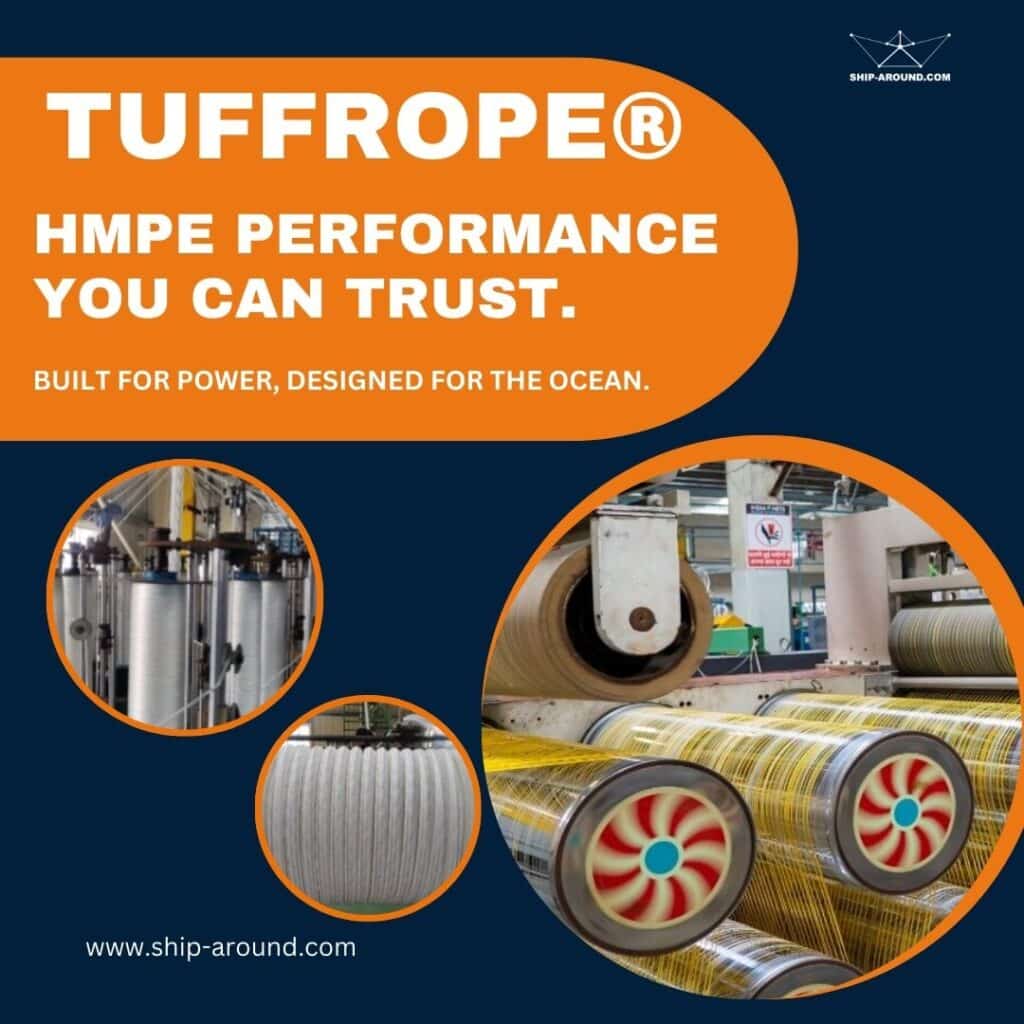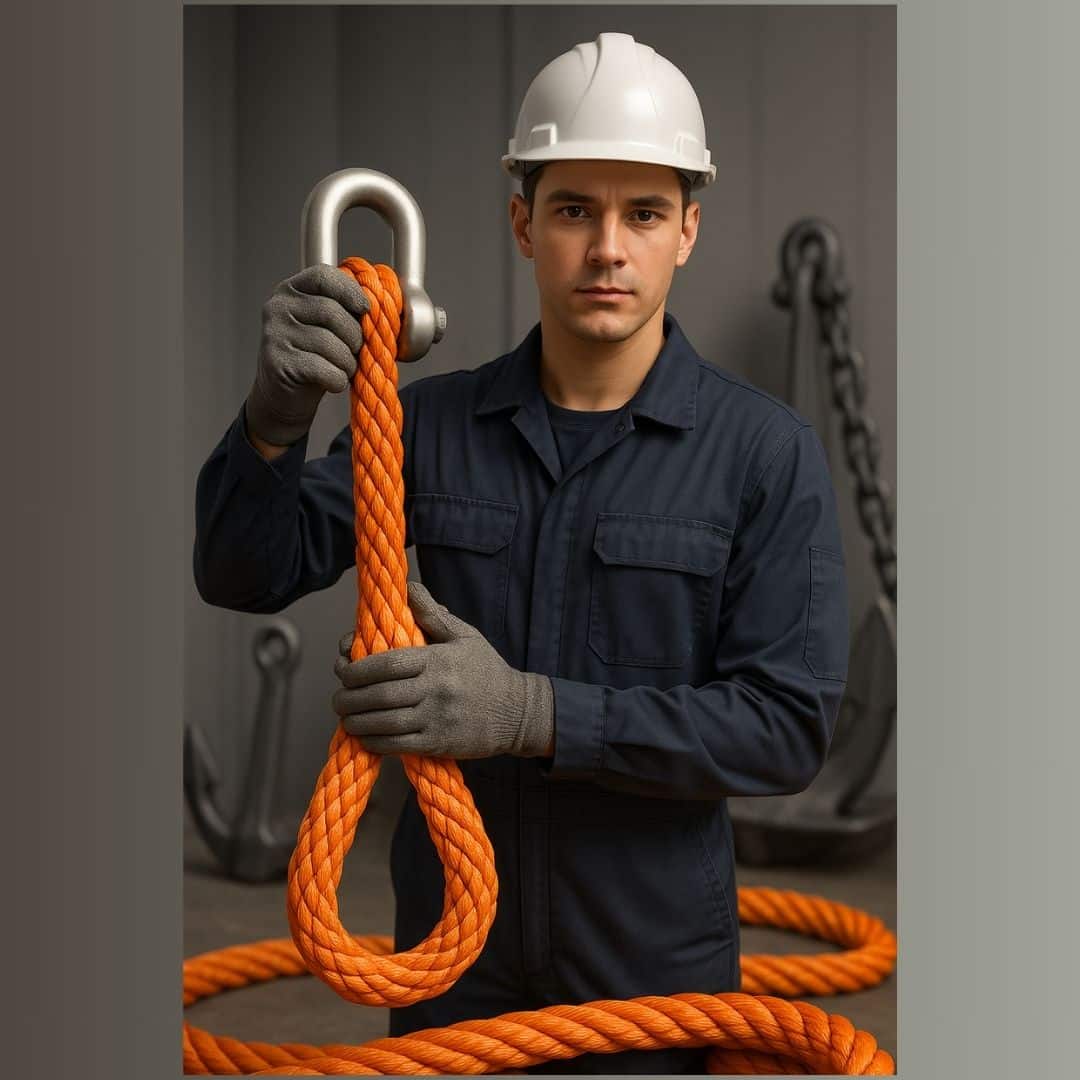Choosing the right rope material is critical in maritime operations, offshore projects, industrial applications, and heavy lifting environments. Not all ropes are created equal—Nylon, Polypropylene, and HMPE (High Modulus Polyethylene) each serve distinct purposes depending on strength, durability, buoyancy, and resistance to environmental elements.

1. Nylon Ropes: Nylon ropes are among the most commonly used synthetic ropes in marine environments due to their elasticity and load-bearing capabilities. Key Features include:
- High tensile strength which is ideal for heavy-duty mooring and towing.
- Excellent shock absorption stretches under load, preventing sudden jolts.
- Resistant to abrasion and UV degradation has longer life in harsh marine settings.
- Sinks in water and useful for underwater applications.
Best Use Cases:
- Mooring lines
- Anchor lines
- Dock lines
Considerations: Nylon ropes can lose strength when wet, and their stretchiness might not suit precise load positioning.
2. Polypropylene Ropes: Polypropylene is a popular option in applications where buoyancy, affordability, and resistance to chemicals matter more than strength.
- Floats on water useful for rescue lines or floating barriers.
- Lightweight and low cost good for short-term or low-impact tasks.
- Resistant to moisture and most chemicals and suitable for industrial and marine environments.
Best Use Cases:
- Lifelines
- Marker buoys
- General-purpose utility ropes
Considerations: Polypropylene degrades faster under UV exposure and isn’t as strong as nylon or HMPE ropes.
3. HMPE Ropes: HMPE (High Modulus Polyethylene) ropes, including brands like Tuffrope, are cutting-edge in terms of performance and strength-to-weight ratio. This makes HMPE an ideal replacement for wire rope in many high-load, safety-critical marine operations.
- Extremely high strength, stronger than steel wire ropes of the same diameter.
- Ultra-lightweight and easy to handle and deploy.
- Minimal stretch which offers precise load control.
- Floats on water and is resistant to UV, abrasion, and chemicals.

Best Use Cases:
- Deepwater mooring
- Heavy-duty lifting
- Offshore and subsea rigging
- Towing and salvage operations
Considerations: HMPE ropes are more expensive, but their durability and performance justify the investment for mission-critical applications.

Understanding Nylon-Polypropylene-HMPE Rope materials like nylon, polypropylene, and HMPE is crucial when selecting the right marine ropes for your operation. Whether you’re looking for flexibility, buoyancy, or unmatched strength, there’s a material designed for the task. For high-performance projects requiring maximum safety and reliability, HMPE ropes like those offered by Tuffrope are setting new industry standards.

